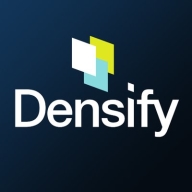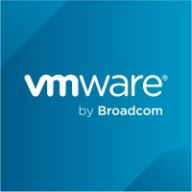

VMware Cloud Director and Densify are competitors in the cloud management and optimization category. VMware Cloud Director leads in pricing and support, while Densify is preferred for its advanced features, suggesting better value for its cost.
Features: VMware Cloud Director provides comprehensive tools for multi-tenant management, scalability, and resource allocation. It supports integration with various cloud platforms, ensuring flexibility and adaptability. Densify offers intelligent cloud optimization, real-time resource management, and predictive analytics, helping businesses optimize resource allocation and efficiency.
Room for Improvement: VMware Cloud Director could enhance its data protection and disaster recovery features and improve integration simplicity with various environments. Densify might focus on making setup and configuration more straightforward and provide clearer documentation for better user guidance, and expand its customer support channels.
Ease of Deployment and Customer Service: VMware Cloud Director is known for its straightforward deployment process and strong customer support network, ensuring a smooth setup. Densify, while having a more complex setup due to its advanced functionalities, offers robust customer service to assist with deployment, making it suitable for companies ready to handle complex configurations.
Pricing and ROI: VMware Cloud Director is favored for its competitive pricing, offering a lower initial setup cost and faster ROI. Densify may have higher upfront costs but provides significant long-term efficiency gains, which are valuable for organizations focusing on strategic resource management and cost control.
| Product | Market Share (%) |
|---|---|
| VMware Cloud Director | 5.4% |
| Densify | 0.9% |
| Other | 93.7% |


| Company Size | Count |
|---|---|
| Small Business | 1 |
| Midsize Enterprise | 1 |
| Large Enterprise | 9 |
| Company Size | Count |
|---|---|
| Small Business | 24 |
| Midsize Enterprise | 11 |
| Large Enterprise | 36 |
Densify is a hybrid cloud and container resource management platform that makes workloads self-aware of their precise resource requirements and automates the resource management and selection process. This solution helps you control your cloud spend and also helps your apps perform and scale better. Densify enables you to match your cloud requirements with the optimal cloud supply. Additionally, Densify is the only technology that leverages patented, predictive machine learning-powered analytics to perform advanced modeling of workload patterns, and provide precise optimization directives. It is ideal for cloud engineers, container platform owners, and IT finance.
Densify works by:
Densify Features
Densify has many valuable key features. Some of the most useful ones include:
Densify Benefits
There are many benefits to implementing Densify. Some of the biggest advantages the solution offers include:
VMware Cloud Director, also known as vCloud Director, is a cloud management tool that offers secure, flexible, and efficient cloud resources to thousands of enterprises and IT teams across the world. The solution serves as one of the leading cloud service-delivery platforms for businesses that want to manage and operate their services effectively. By deploying this solution, companies can benefit from virtualized networking, computing, security, and storage. These benefits can be received in a timely manner, as the infrastructure of the product is operationally ready within minutes and clients do not need to install and configure physical infrastructure.
One of the biggest advantages of vCloud Director is that it allows users to build cloud-ready applications. In several ways, it facilitates the process for developers, including:
vCloud Director Features
This VMware product has various features through which users can virtualize their data and benefit from quality management solutions. Among the popular capabilities of vCloud Director are:
vCloud Director Benefits
VMware vCloud Director offers various benefits to its users. Some of these include:
Reviews from Real Users
Ajit Y., a cloud architect at a computer software company, likes VMware vCloud Director because it is a stable, truly multitenant software and the go-to tool for infrastructure as a service.
Kashif F., a divisional engineer at National Telecom Corporatio, rates vCloud Director highly because the product can be used for infrastructure provisioning without using a platform service.
We monitor all Cloud Management reviews to prevent fraudulent reviews and keep review quality high. We do not post reviews by company employees or direct competitors. We validate each review for authenticity via cross-reference with LinkedIn, and personal follow-up with the reviewer when necessary.